Introduction
Not since my days as a military parachutist have I experienced such a “buzz” as when I walked over the top of the Royal Albert Bridge recently. To the endless variety of projects and the thrill of being the first to find the answers can be added the excitement of working in demanding conditions at great height.
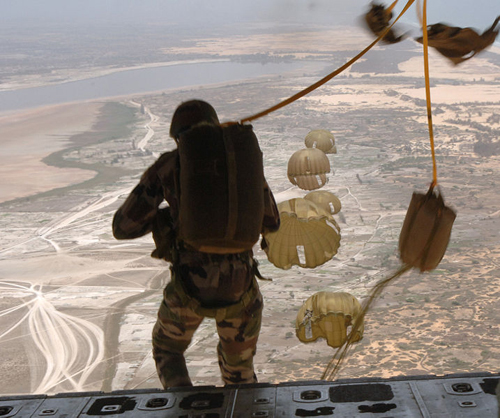
The Royal Albert Bridge spans the River Tamar and carries the railway from Devon to Cornwall in the south west of England. Completed in 1859, it was the last bridge designed by Isambard Kingdom Brunel and is probably his finest work. The Bridge is 2,240 feet (683 metres) long and each of the two main spans is 455 feet (140 metres). It is 172 feet (52 metres) high in the centre of each span.
A major feat of engineering at any time, but to have built such a structure 150 years ago is quite remarkable. This photograph was taken in 1858 and shows the Devon span before it was raised into position.

Background
As part of the 150th anniversary research is being carried out on the original paint colour applied to the Bridge. Having previously worked on the paint analysis of several other bridges, notably Tower Bridge; Southwark Bridge and Hammersmith Bridge I was well-equipped to deal with this project.
Being a recent convert to Twitter and keen to put it to the test, I had sent a “tweet” to BBC Cornwall announcing the impending visit. Within two hours they had telephoned me and said that a cameraman would be on site to record the event.
Planning
Clearly, with trains running, it was not going to be possible to carry out the sampling of the paint during the day. However, in the early afternoon a quick reconnaissance was made in order to work out a strategy for the night.
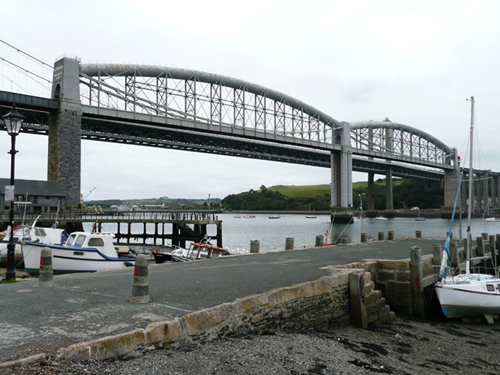
Samples would be taken from the arch on the Devon side (the Devon Portal) and then along the top of the two spans (see view of the top of the Devon span below) before descending the ladder on the Cornwall Portal. The return trip would be made along the track.
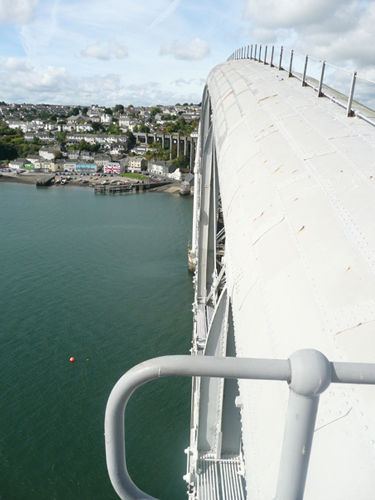
While on top of the Devon Portal I noticed a cameraman on the neighbouring Tamar Bridge and when I returned to the car park was interviewed by John Banks for BBC Spotlight. The interview, which went out on the regional news that evening can be seen here.

Initial Research
The remainder of the afternoon was spent carrying out initial research. Fortunately the Plymouth City Museum and Art Gallery was holding an exhibition on the Bridge which contained many images of it taken over the years. The next-door Reference Library had several files of news cuttings and a photograph album which gave good background information.
Sampling
At midnight, following a safety briefing and equipment check, I and two colleagues from Network Rail walked along the track towards the Devon Portal. With only head torches the climb to the top was uneventful, the lights in the distance giving no clue to the height.
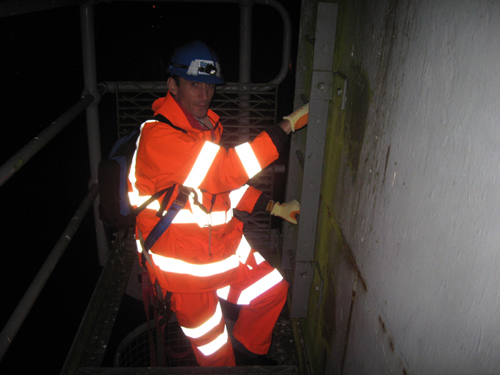
Samples were taken from many elements of the Bridge, including some that were known to have been added in the twentieth century. The paint layers on these alterations would help to provide a series of datum points from which the age of many of the decorative schemes could be established. In many ways paint sampling can be compared to assembling a jigsaw puzzle without having the lid of the box to work from.

One such element was the handrail (erected in 1924) which provided a confidence booster while walking over the top of the two spans. At nearly 180 feet (55 metres) above the water and with a steeply curving profile it was good to be able to clip the safety harnesses to something as they made their way across.
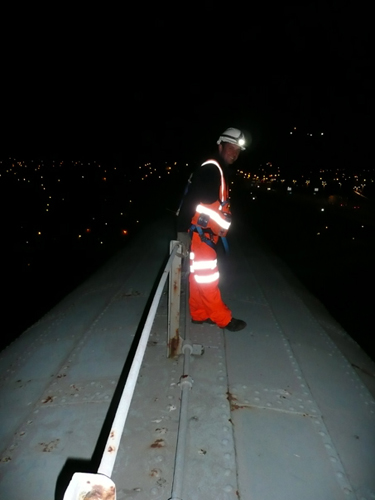
Having crossed over to Cornwall the return was made along the track. It could be seen that the downstream side of the Bridge suffers from heavier weathering and so care was taken to ensure that samples were taken from both sides to ensure that the full story would be told.
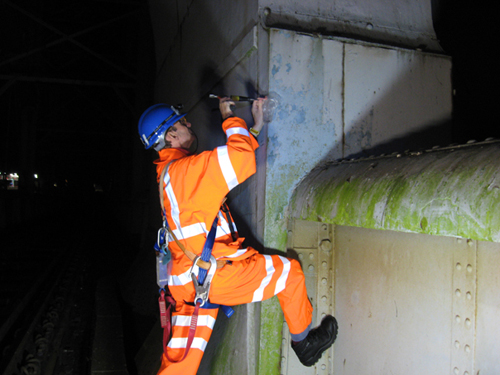
Analysis and Further Research
The samples have all now been set in resin; cut and polished. Before examining them I undertook further documentary research on the building and maintenance of the Bridge. With the very generous assistance of Thomas Bowden1 who has recently published a history of the Bridge I assembled a large collection of photographs to aid my interpretation of the paint layers.

With thanks to Network Rail for their assistance and support in this research project.
A further blog, which shows the results of the analysis can be seen here – A Brunel Bridge – part two]
Note
1 Thomas Bowden is the author and publisher (ATM Publishing – email atmpublishing@gmx.com) of “Brunel’s Royal Albert Bridge Saltash – Revisited” published in April 2009 to commemorate the 150th anniversary of the opening of the Royal Albert Bridge by HRH Prince Albert on 2nd May 1859.
Thomas is a retired railwayman who has been interested in the Bridge for over 50 years and has a good knowledge of the Bridge having walked across it four times. Over the past fifty years he has acquired an image bank of over 700 images of the Bridge. Thomas now owns and runs a small publishing business specialising in short run, specialist subject transport publications.













No comments yet. Be the first!